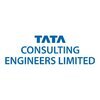Filter interviews by
Rheomold Engineering Solutions CAE Engineer Interview Questions and Answers
Rheomold Engineering Solutions CAE Engineer Interview Experiences
1 interview found
I applied via Naukri.com and was interviewed before Jan 2023. There was 1 interview round.
(1 Question)
- Q1. Basic FEA questions
Top trending discussions






Interview questions from similar companies

Interview Questionnaire
1 Question
- Q1. Hard core techanical

Senior Engineer Interview Questions & Answers
Larsen & Toubro Limitedposted on 14 Jul 2021
Interview Questionnaire
1 Question
- Q1. What is your role in previous company

Senior Engineer Interview Questions & Answers
Larsen & Toubro Limitedposted on 25 Nov 2021
I applied via Naukri.com and was interviewed in May 2021. There were 4 interview rounds.
Interview Questionnaire
1 Question
- Q1. Properties of steel & concrete, PSC & RCC structure, Execution strategy , How can we assist the designer according to actual site conditions etc
- Ans.
The properties of steel and concrete, PSC and RCC structures, execution strategy, and assisting the designer according to site conditions.
Steel has high tensile strength and is commonly used in construction for beams, columns, and reinforcement.
Concrete is a composite material made of cement, aggregates, and water, providing compressive strength and durability.
PSC (Prestressed Concrete) structures use pre-tensioning or...
Interview Preparation Tips

Senior Engineer Interview Questions & Answers
Larsen & Toubro Limitedposted on 11 Jun 2022
I applied via Campus Placement and was interviewed before Jun 2021. There were 3 interview rounds.
Mathematics, English, Reasoning
(2 Questions)
- Q1. They asked Technical questions
- Q2. What is antenna What is satcom
- Ans.
An antenna is a device that converts electrical signals into electromagnetic waves and vice versa. Satcom is short for satellite communication.
Antennas are used for transmitting and receiving signals in various applications such as radio, television, and wireless communication.
Satcom refers to the use of satellites for communication purposes, including television broadcasting, internet access, and military communicatio...
Clean India
Corruption
Interview Preparation Tips

Senior Engineer Interview Questions & Answers
Larsen & Toubro Limitedposted on 10 Sep 2015
I applied via PLACEMENT
Interview Preparation Tips
Experience: Good detailed interview in terms of technical knowledge
Tips: Should be thorough with the projects you have done during the course
General Tips: be confident of what you put in your resume
Technical knowledge regarding projects undertaken during engineering should be sound
Be confident
Skills: Communication, Thinking capability, knowledge applying capability
College Name: V.E.S Institute Of Technology
Motivation: Opportunity to work in a renowned and core technical company
Funny Moments: We consider the interview panelists to be as tough as our viva externals. Interviewers are mostly on your side(contrary to viva professors :P)

Senior Engineer Interview Questions & Answers
Larsen & Toubro Limitedposted on 10 Sep 2017
I appeared for an interview before Sep 2016.
Interview Questionnaire
1 Question
- Q1. Ocampo, basic electronics and C
Interview Preparation Tips
Duration: 1 hour
Total Questions: 50
Skills: Embedded Systems, C Programming
College Name: Sahyadri college of engineering

Senior Engineer Interview Questions & Answers
Larsen & Toubro Limitedposted on 12 May 2018
Interview Questionnaire
5 Questions
- Q1. Pertaining to the mentioned roles and responsibilities in your resume
- Q2. Planning and work order creation
- Q3. Piling activities
- Q4. Introduction
- Q5. Cross checking of documents
Interview Preparation Tips
Experience: On the criteria that I scored atleast 60% overall and had no gap between job/s.

Senior Engineer Interview Questions & Answers
Larsen & Toubro Limitedposted on 1 Jun 2021
I applied via Walk-in and was interviewed in Feb 2021. There were 3 interview rounds.
Interview Questionnaire
2 Questions
- Q1. Salary discussion and some professional questions.
- Q2. Technical realated your stream
Interview Preparation Tips

I applied via Approached by Company and was interviewed before Feb 2021. There were 2 interview rounds.
(2 Questions)
- Q1. What are your salary expectations?
- Ans.
I expect a competitive salary that reflects my experience, skills, and the industry standards for a Senior Engineer role.
Based on my research, the average salary for a Senior Engineer in this industry ranges from $100,000 to $130,000.
I have over 8 years of experience in engineering, which I believe warrants a salary towards the higher end of that range.
Additionally, I bring specialized skills in project management and ...
- Q2. What is your family background?
(1 Question)
- Q1. Technical round - depends on your sector and manager . Else no technical questions. Ready to travel . Married or not . Over...
Interview Preparation Tips
- Basic
All the best
Rheomold Engineering Solutions Interview FAQs
Tell us how to improve this page.
Interview Questions for Popular Designations
Overall Interview Experience Rating
based on 1 interview experience
Difficulty level
Duration
Interview Questions from Similar Companies
Rheomold Engineering Solutions CAE Engineer Reviews and Ratings
based on 4 reviews
Rating in categories
|
Design Engineer
22
salaries
| ₹2.4 L/yr - ₹6.5 L/yr |
|
CAE Engineer
22
salaries
| ₹2.2 L/yr - ₹6.5 L/yr |
|
CAE Analyst
15
salaries
| ₹3 L/yr - ₹7 L/yr |
|
Senior CAE Analyst
5
salaries
| ₹4.4 L/yr - ₹11 L/yr |
|
Technical Lead
4
salaries
| ₹30 L/yr - ₹42 L/yr |

Larsen & Toubro Limited

L&T Construction

Tata Projects

Megha Engineering & Infrastructures
- Home >
- Interviews >
- Rheomold Engineering Solutions Interview Questions













